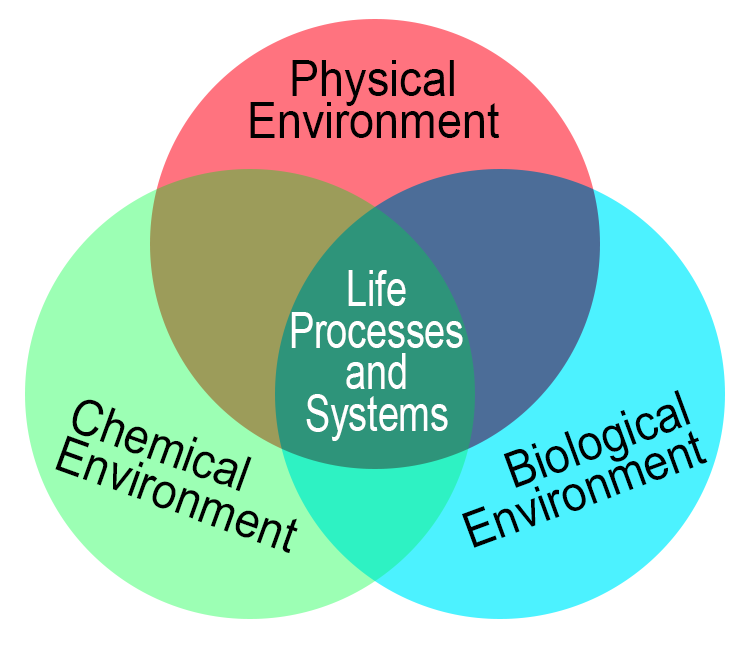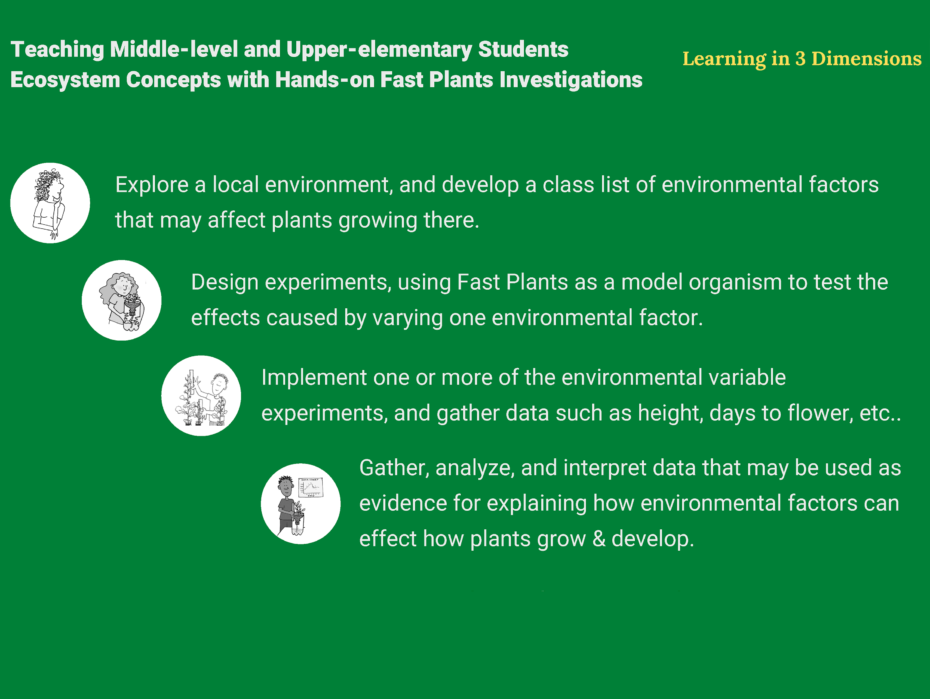Why hands-on ecosystem investigations?
Ecosystems are highly complex systems; how can we support learners to grasp the effects on populations when one component of an ecosystem changes? Using a model ecosystem and model population in a hands-on investigation is an effective teaching strategy.
In addition to making abstract ecosystem concepts more concrete, using Fast Plants as a model organism in ecosystem investigations supports learning about systems and systems modeling. This important crosscutting concept bridges many science disciplines and is highly relevant in environmental sciences.
Ecosystem phenomena and components
Investigating ecosystem dynamics starts with identifying components that are key to the system. This provides an opportunity to use locally relevant ecosystem(s) as the phenomena that drives this investigation. For example, students in the southwest could brainstorm a list of environmental components that are characteristic in a desert biome, using a video or even a virtual tour as a conversation starter. In addition, students can compare two different ecosystems to emphasize how their components are characteristic, may differ, and have potential to change and affect populations (possibly introducing the terms abiotic and biotic with cultural sensitivity).
Designing and implementing a model ecosystem investigation
In 2020, the Fast Plants Team drew upon our many tried-and-true resources to develop a new lesson plan for an experimental, model ecosystem investigation. As with our other recent lesson/investigation development, these plans were designed in the Gather, Reason, Communicate instructional model. Also like our other resources, this lesson has a Creative Commons license for non-commercial use; so, you may download, print, or make a copy to your own Drive and edit as you wish for educational purposes.
In addition to the written lesson plans, a webinar held December 2020 featured this investigation. You’ll find a recording of the webinar (and handouts can be downloaded) on Carolina Biological’s Knowledge Center (scroll down for the webinar recording). Be sure to watch the segment in the webinar when Dr. Claudia Solis-Lemus of UW-Madison demonstrates how to analyze data generated from an environmental experiment, including how to use the new Wisconsin Fast Stats App.
This ecosystem investigation is aimed primarily at teaching and learning in upper elementary or middle school level students. However, versions of this investigation are used with undergraduate students at UW-Madison. In other words, this investigation lends itself well to adaptation and differentiated instruction to suit a wide range of teaching and learning contexts.
Ecosystem components: Supporting information
Background information on ecosystem components is available in a 3-post series (Fast Plants blog posts) organized around chemical, biological, and physical environmental factors. These blog posts discuss the influence of different biotic and abiotic factors when growing Fast Plants. For teachers this information can be useful when planning which environmental factors might work well to offer to students as potential experimental variables. Similarly, high school or college students can reference these posts when designing experiments and interpreting results.
Access Fast Plants Open Source Ecosystem Dynamics Investigation here!



